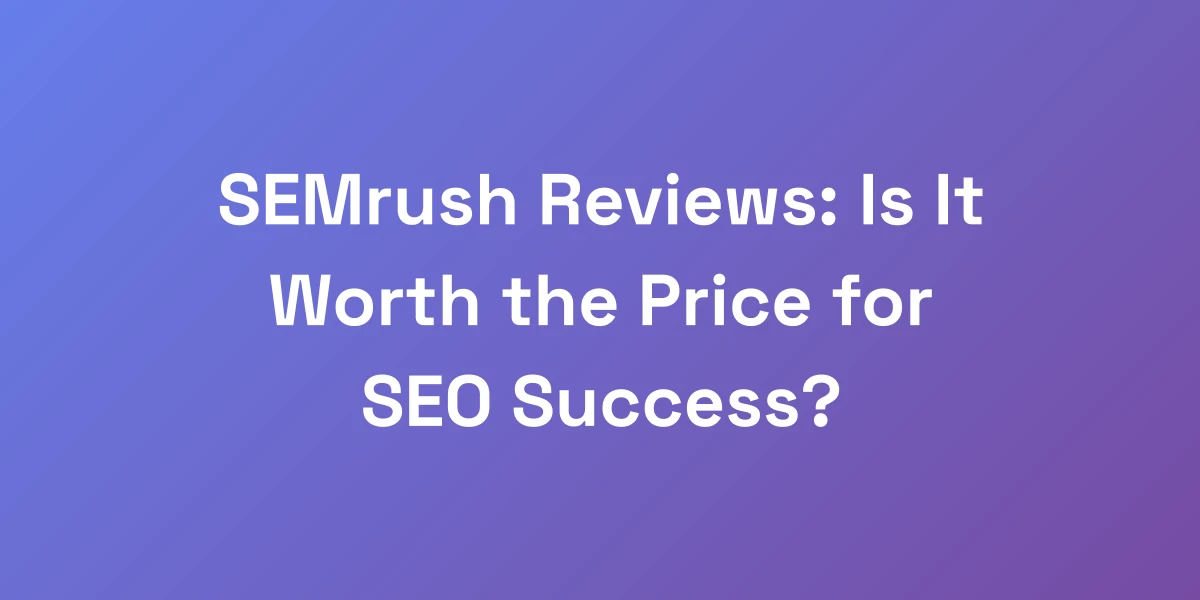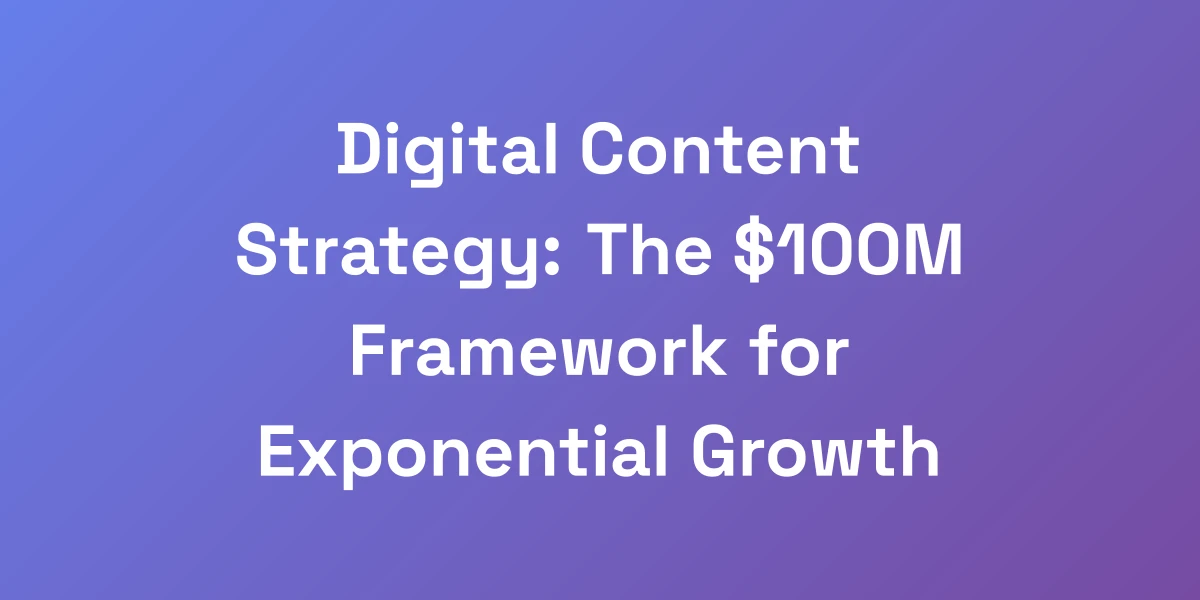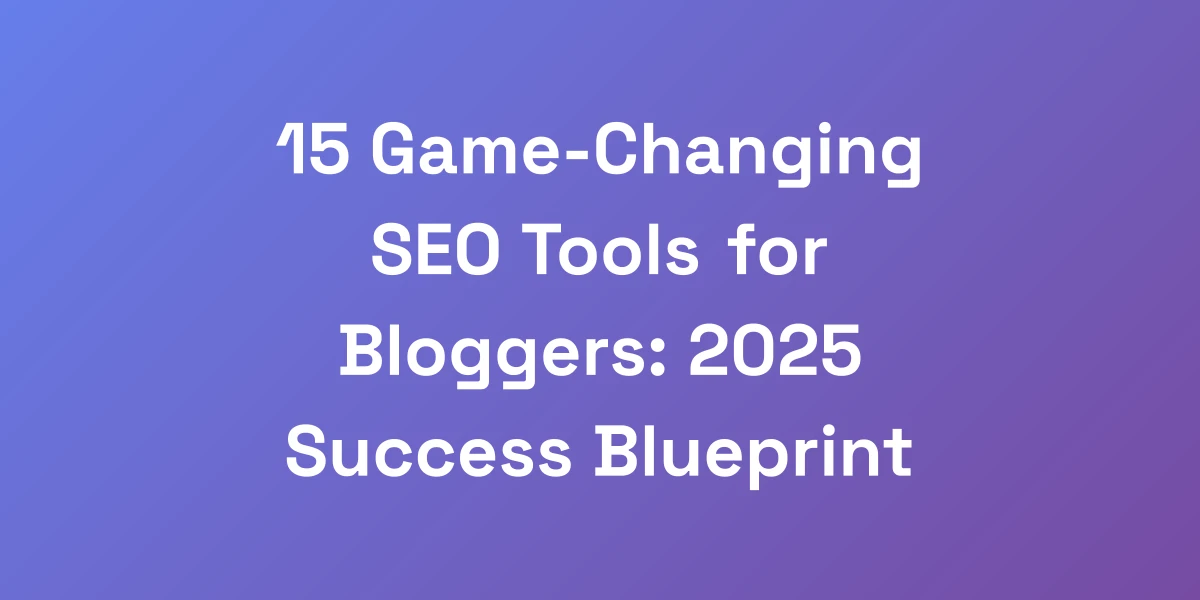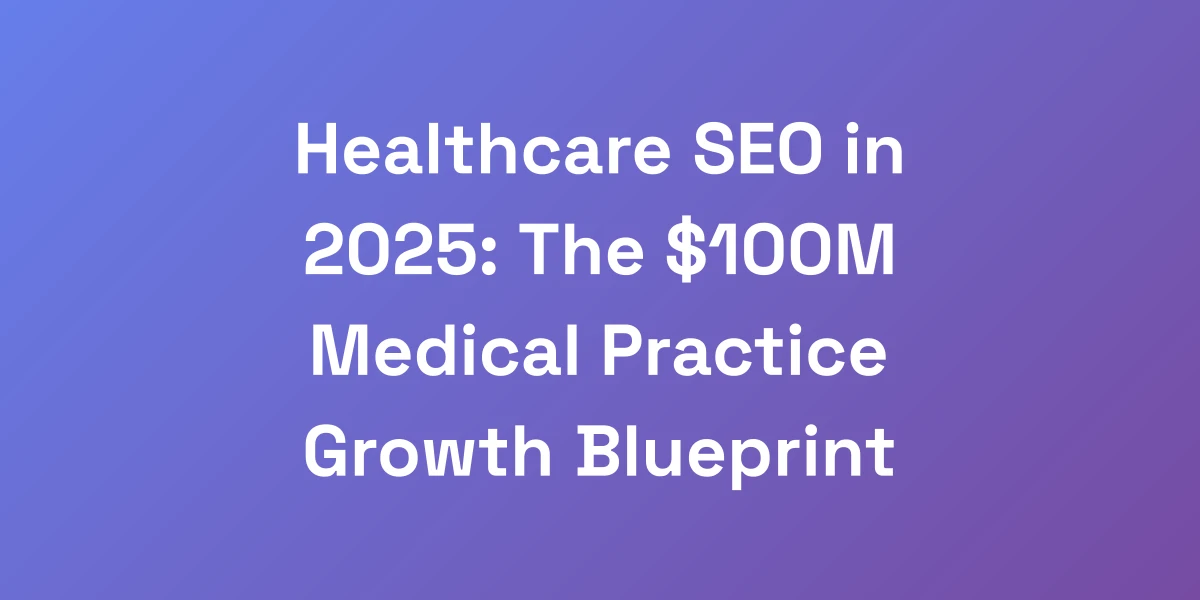
What is Content SEO? The $100M Blueprint for Ranking Success
Apr 9, 2025 | By [email protected]
What is Content SEO? The $100M Blueprint for Ranking Success
We’re about to tear down everything you thought you knew about Content SEO. Forget the old-school tactics of keyword stuffing and generic content creation. It’s time to embrace a new era where your content prints money while you sleep.
The challenge? Most businesses stumble because they’re stuck in the past, not knowing how to navigate the complex landscape of modern SEO. But here’s the kicker: content isn’t just for rankings—it’s your 24/7 salesperson, driving traffic and conversions around the clock.
Imagine creating content that not only satisfies search engines but also captivates your audience, turning casual visitors into loyal customers. Sounds like a dream, right? Well, it’s not. We’ve helped businesses generate over $100M in revenue by mastering the art and science of Content SEO. Ready to uncover the blueprint for your own ranking success?
With global media consumption statistics showing a continuous rise in digital engagement, leveraging Content SEO has never been more crucial to capture your audience’s attention in the saturated online space. Additionally, the distribution of media time worldwide highlights the importance of strategic content placement to maximize reach and impact.
The Million-Dollar Truth About Content SEO in 2025
Let’s cut through the BS and get straight to the point. Content SEO isn’t just about ticking off SEO checklists; it’s about strategically creating content that resonates with both search engines and humans. This dual focus is what transforms your content into a revenue-generating machine. Future trends like Google’s Passage Ranking in 2024 will further enhance the importance of precise content structuring to meet semantic search demands.
Why 90% of Businesses Fail at Content SEO
Ever wondered why the majority of businesses falter in their Content SEO efforts? It boils down to a lack of understanding and execution. Here’s the brutal truth:
- They chase keyword trends without considering user intent.
- Content is often shallow, failing to provide genuine value.
- There’s no cohesive strategy linking content to business goals.
To avoid being part of the 90%, you need a comprehensive approach that aligns your content with both search algorithms and audience needs. This means diving deep into strategic planning and consistent execution.
The Real Definition of Content SEO (Not What You Think)
Forget the outdated notions. Content SEO is not just about optimizing for search engines. It’s about creating valuable, engaging content that your audience finds irresistible. Here’s what sets it apart:
- Relevance: Your content must address the specific needs and questions of your target audience.
- Authority: Establishing yourself as a trusted source in your industry.
- User Experience: Ensuring your content is easy to navigate, read, and interact with.
By focusing on these elements, you create content that’s not only optimized for search engines but also genuinely valuable to your readers. Integrating semantic parsing trends for 2024 can further enhance your content’s alignment with user intent.
Content SEO vs Technical SEO: The Critical Differences
Here’s where things get interesting. Content SEO and Technical SEO are two pillars of a successful SEO strategy, but they play different roles:
- Content SEO: Focuses on creating and optimizing content to attract and engage your audience. It’s about storytelling, providing solutions, and ensuring your content meets user intent.
- Technical SEO: Deals with the backend aspects of your website, ensuring it’s crawlable, fast, and mobile-friendly. It’s about site structure, loading times, and overall technical performance.
Understanding the distinction is crucial. While Content SEO drives traffic through valuable content, Technical SEO ensures that traffic can find and interact with that content effectively. For a comprehensive history of Google algorithm updates, stay informed with the latest changes.
The ROI Mathematics of Proper Content SEO
Let’s talk numbers. When executed correctly, Content SEO can deliver an impressive return on investment. Here’s how:
- Cost-Effectiveness: Compared to paid advertising, content marketing provides long-term traffic without ongoing costs.
- Scalability: One piece of high-quality content can continue to generate traffic and leads for years.
- Revenue Growth: Strategic content aligns with sales funnels, increasing conversion rates and, ultimately, revenue.
Businesses that invest in Content SEO see a substantial increase in organic traffic and revenue. In fact, 68% of businesses report a significant boost in content marketing ROI thanks to strategic SEO practices.
Why Traditional Content SEO Advice is Dead Wrong
Let’s face it: traditional Content SEO advice is outdated. It’s time to abandon the old rules and adopt new strategies that reflect today’s search landscape. Here’s why traditional advice falls short:
- Keyword Stuffing: No longer effective and often penalized by search engines.
- One-Size-Fits-All Content: Generic content fails to engage and convert.
- Neglecting User Intent: Focusing solely on search rankings without considering what users actually want.
The new approach? Focus on creating tailored, high-value content that meets the specific needs and intents of your audience. This shift is what separates the winners from the losers in the Content SEO game. For insights into the latest Google SEO Updates 2024, keep up with recent developments.
The 4-Part Content SEO Framework That Actually Works
After analyzing thousands of successful content pieces, we’ve distilled Content SEO down to four critical components. This isn’t theory—this is a battle-tested framework that has generated millions in revenue for our clients. It’s about creating content that serves both search engines and users while driving real business results.
Part 1: Strategic Keyword Research That Matters
Keyword research is more than just finding popular terms. It’s about identifying the right keywords that align with your business goals and user intent. Here’s how to do it right:
- Identify High-Intent Keywords: Focus on keywords that indicate a strong intent to convert.
- Long-Tail Keywords: These are less competitive and more targeted, attracting high-quality traffic.
- Competitive Analysis: Analyze what keywords your competitors are ranking for and identify gaps you can fill.
Actionable Tip: Use tools like Ahrefs and Semrush to uncover keywords that not only drive traffic but also align with your conversion goals.
Part 2: User Intent Mapping and Content Architecture
Understanding user intent is key to creating content that resonates. Here’s how to map it effectively:
- Categorize Intent: Determine whether the user is looking to buy, learn, or navigate.
- Content Types: Create different types of content (blogs, guides, videos) tailored to each intent category.
- Content Hierarchy: Organize your content in a way that guides users through their journey seamlessly.
Actionable Tip: Develop a content matrix that aligns different types of content with specific user intents, ensuring each piece serves a distinct purpose. Additionally, implementing semantic parsing trends 2024 can enhance your content architecture to better serve user intents.
Part 3: Content Creation That Converts
Creating content that converts is both an art and a science. Here’s how to master it:
- Compelling Headlines: Your headline is the first impression. Make it count.
- Storytelling: Engage your audience with stories that resonate and drive action.
- Clear CTAs: Guide your readers on what to do next with clear and persuasive calls to action.
Actionable Tip: Incorporate case studies and real-life examples to demonstrate the value of your products or services, making your content more relatable and persuasive. Learn about the best content length for SEO to optimize your posts effectively. Additionally, understanding content length and SEO can further improve your content strategy.
Part 4: On-Page Optimization Mastery
On-page optimization is crucial for making your content search-engine friendly. Here’s how to excel:
- Title Tags and Meta Descriptions: Optimize these elements to improve click-through rates.
- Internal Linking: Create a robust internal linking structure to enhance navigation and SEO.
- Image Optimization: Use alt texts and proper formatting to improve load times and accessibility.
Actionable Tip: Regularly audit your on-page elements to ensure they are fully optimized and aligned with your overall SEO strategy. Implementing SEO optimization automation can help streamline this process. To understand how often to update SEO, refer to expert guidelines.
Implementation Timeline and Checklist
Executing this framework requires a systematic approach. Here’s a timeline and checklist to guide
Additional Resources
For specialized strategies and tools, consider exploring resources tailored to specific business needs:








